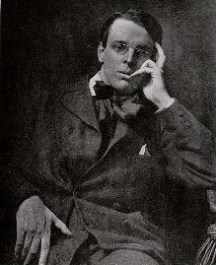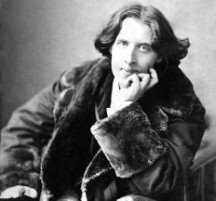Shakespeare, William (1564–1616).
The Elizabethan playwright's work came to American stages relatively early, although there have since been notable peaks and valleys in his popularity with playgoers and producers. The first Shakespearean play performed on an American stage was probably Richard III, which Thomas Kean acted in New York in 1750 and may have played earlier in Philadelphia. Kean and his partner Walter Murray did not use Shakespeare's actual text but rather Colley Cibber's version. Indeed, the use of Restoration and 18th‐century redactions of virtually all of Shakespeare's plays was commonplace as much in America as in London until well into the last half of the 19th century. For the remainder of the 18th century and the very early years of the next, the Shakespearean repertory of the time was presented as part of the regular season by the stock companies that dominated the various American theatrical centers. However, with the appearance of noted tragedians such as Cooper, Cooke, and Edmund Kean, and the rise of the star system, the great actors began to tour. They generally toured alone, accepting whatever supporting casts and scenery local playhouses offered. Not until after the Civil War did great tragedians such as Edwin Booth and Lawrence Barrett begin to travel with specially selected companies and their own scenery. These touring ensembles peaked at the turn of the century, notably with the company headed by Julia Marlowe and E. H. Sothern. The productions of the great itinerant ensembles, as well as those mountings by distinguished stock companies from Burton's through Daly's, were, according to modern standards, top‐heavy with elaborate scenery. In the 20th century the rise of a more blatant commercialism on Broadway, the growth of an audience not steeped in older traditions, and perhaps simply a surfeit of Shakespeare caused a gradual dropping off of productions. Thereafter, most noted productions were mounted as occasional vehicles for special stars. To some extent collegiate playhouses compensated for this falling away. About the time of World War I, Shakespearean productions also discarded their sumptuous settings, relying thereafter primarily on more suggestive sets and imaginative lighting. These changes came about as much for aesthetic reasons as for commercial ones. In the 1930s and beyond Shakespearean festivals were established from Oregon to Connecticut, and many of the rarely performed works, no longer deemed profitable in mainstream theatres, were offered here along with the more famous plays. Starting in the 1950s there was an increase in the number of productions, the result of what would become the New York Shakespeare Festival in Manhattan and the development of regional theatres across the country, most of which would include one of the Bard's works on a regular basis. Today the only Shakespeare productions on Broadway are those boasting stars or coming from a renowned international troupe, such as the Royal Shakespeare Company. In an ambitious move, producer Joseph Papp offered the entire canon beginning in 1988 and not completed until 1997, six years after his death.
The following Shakespeare plays each have their own entry: Antony and Cleopatra, As You Like It, Hamlet, Henry IV, Julius Caesar, King Lear, Macbeth, Merchant of Venice, The Merry Wives of Windsor, A Midsummer Night's Dream, Much Ado About Nothing, Othello, Richard III, Romeo and Juliet, The Taming of the Shrew, and Twelfth Night. As for the other works, a thumbnail history in America follows.
All's Well That Ends Well had been performed on rare occasions by collegiate and regional theatres, but the New York Shakespeare Festival gave it its professional premiere, as far as the city was concerned, when it included it in the 1966 season in Central Park. In 1983 the Royal Shakespeare Company offered a critically acclaimed mounting, set at the time of World War I, that marked its first appearance in a Broadway theatre. The Comedy of Errors was first done at the Park Theatre in 1804, but its most memorable American revival was the free‐wheeling version offered with William H. Crane and Stuart Robson in 1878 and again in 1885. It has been performed intermittently since but is probably most familiar to playgoers through the Rodgers and Hart musical version, The Boys from Syracuse (1938), which employed only a single line of the text. Perhaps even more removed was a Lincoln Center production in 1987 that retained Shakespeare's text but was performed by the juggling Flying Karamazov Brothers as a onering circus. Coriolanus was presented initially at Philadelphia's Southwark Theatre in 1767 and it remained popular with all the classic tragedians, including Edwin Forrest and John McCullough, and is still revived with some regularity. Christopher Walken was particularly praised as the Roman emperor in a 1988 Public Theatre mounting. Cymbeline had its American premiere at the Southwark Theatre in 1767 with Miss Cheer as Imogen and the younger Hallam as Posthumus. Never very popular, it nonetheless provided successful vehicles for Adelaide Neilson and Viola Allen but has rarely been revived in modern times. Cooper was apparently the first American Henry V at the Park Theatre in 1804. One of the least popular of the plays for many years, it saw new life in the 1960s and 1970s when presented as an antiwar piece. The three parts of the history Henry VI have been presented in America only on collegiate and festival stages or the occasional mounting by a visiting company. The pageant play Henry VIII was first offered to New York in 1799. Although infrequently done, it was part of the season mounted in 1946 by the American Repertory Theatre with Victor Jory as Henry, Eva Le Gallienne as Katharine of Aragon, and Walter Hampden as Cardinal Wolsey. King John was first mounted at the Southwark Theatre in 1768 with Douglass in the title role, but it has never been popular with American playgoers, although such celebrated performers as McCullough and Modjeska have starred in revivals.
Love's Labours Lost was not produced in New York until Daly's celebrated 1874 mounting, and it continues as one of the plays least‐often resurrected. The earliest known American presentation of the dark comedy Measure for Measure is in 1818 in New York with performances by Mr. and Mrs. John Barnes. Adelaide Neilson headed a memorable 1880 mounting, although critical reaction to the play itself as “repulsively immoral” may explain the relative infrequency of Victorian stagings. The changing moral climate in the 1950s and 1960s was probably a factor in the increasing revivals of Measure for Measure, especially at Canada's Shakespeare Festival and some intriguing productions at the Public Theatre. Stagings of Pericles have pretty much been confined to collegiate and festival theatres. Richard II was first offered to New York by James W. Wallack in 1819. It is one of the rare Shakespearean plays that has proved far more popular in the 20th century than it was earlier. Noteworthy among contemporary revivals was Maurice Evans's 1937 production, to which he returned on several later occasions. The Tempest was first presented in 1770 at the Southwark Theatre in Dryden's redaction, and it was many years before a faithful rendering was presented. A movement toward textual accuracy was seen in one of the great 19th‐century productions, that of William E. Burton in 1854 with Charles Fisher as Prospero and Burton as Caliban. Besides restoring much, although not all, of the original text, Burton employed music by Arne, Purcell, and, somewhat anachronistically, Halévy and emphasized pictorial spectacle. By contrast, a notable modern version, staged by Margaret Webster in 1945 with Arnold Moss as Prospero and Canada Lee as Caliban, while rearranging the original text at some major points, offered relatively lean, suggestive settings and costumes and employed modern music by David Diamond. More recent New York Prosperos of note have been Sam Waterston in 1974, Frank Langella in 1989, and Patrick Stewart in 1995. Timon of Athens was a surprise success for the National Actors Theatre in 1993, with Brian Bedford giving a commanding performance in the title role. Titus Andronicus and Troilus and Cressida have been almost wholly in collegiate and festival theatres, although the Old Vic offered the latter in its 1956 visit. Ellen and Charles Kean were the first performers to offer Americans The Two Gentlemen of Verona, which they acted during their 1846 visit. Daly staged a major revival in 1895. While rarely mounted since, except at collegiate and festival productions, it provided the source of a successful musical of the same name (minus the “the”) in 1971. Produced by the New York Shakespeare Festival, it employed rock music; some highly objectionable, scatological lyrics; and a mixture of modern, skeletonized settings with period costuming. The Winter's Tale was called Florizel and Perdita when it was first presented in 1795. Its most successful 19th‐century revival was that of Mary Anderson, who assumed the roles of both Hermione and Perdita. A 1946 Theatre Guild revival was short‐lived.
Old London Bridge - Only for Poets

Connecting the Poets who digging heart of me Still death - Sabarnasri
HEARTY WELCOME & HAVE A NICE STAY

This work is licensed under a Creative Commons Attribution-Noncommercial-No Derivative Works 2.5 India License.
Subscribe to:
Post Comments (Atom)













No comments:
Post a Comment